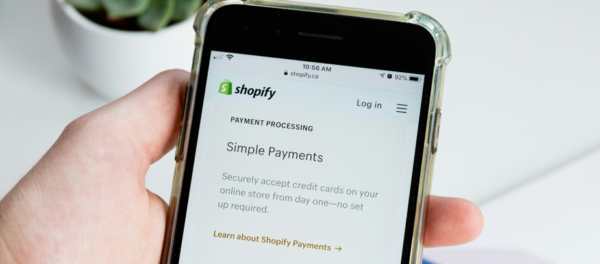Why you should care about your brand SERP
When your online and offline marketing efforts are designed to increase brand awareness, you will often find a higher number of users searching for your brand online. But as your brand grows, there are risks that can impact the performance of these branded searches.
We have outlined below potential problem areas to look for within your branded search engine results pages (SERPs), and areas to focus on to strengthen your branded results.
What risks are there for your brand SERP’s?
Negative press
Negative PR can be an issue for brands of all sizes and if articles like the example seen below are found within your branded SERP, then this can be a huge deterrent for potential customers. Often users looking for your brand want to find out more about your company, or are looking to purchase a product or enquire about your services. Having this type of content visible to users can damage your brand’s reputation and impact your online performance.
If you find instances of negative PR you will need to focus efforts on reinforcing your brand SERP with positive press in an effort to recapture this space.

The article above ranks in position 8 for the term ‘nestle’.
Google SERP Features
If there are a number of related questions being searched for around your brand, Google may surface a People Also Ask box. Again, for Nestle, we can see that negative press has led to users searching for more information to the point that Google now recommends ‘What is so bad about Nestle?’ as the top recommended query.
You can use your Google Search Console account to look for negative branded queries that your website is appearing for. Social listening tools are also useful for identifying user pain points or complaints. These will allow you to approach your brand marketing and PR strategically.
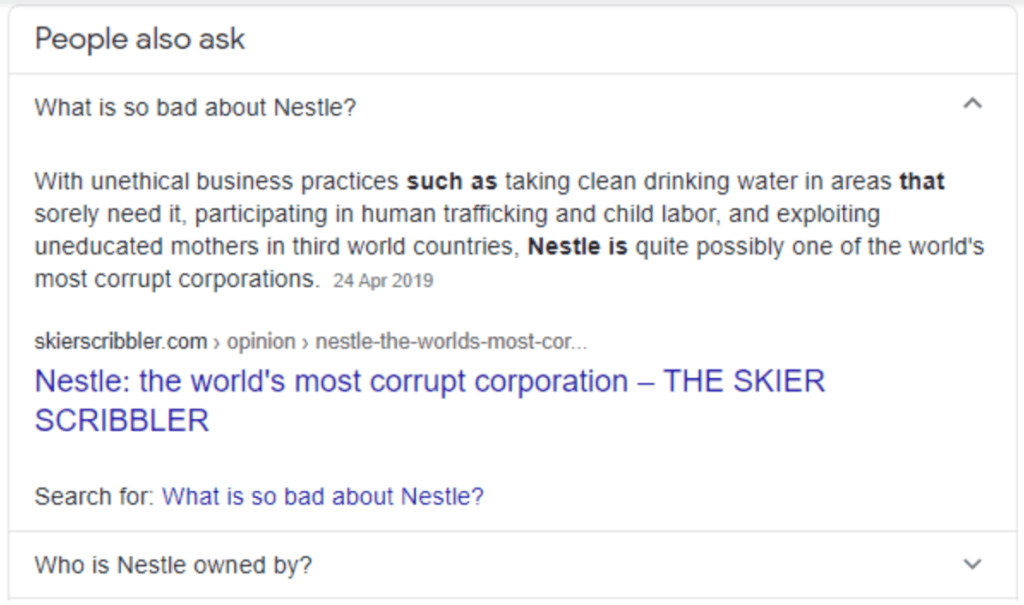
Google’s People Also Ask box surfaces user questions and can appear within a branded SERP.
Competition within the brand SERP
Competitor rankings
If you are an e-commerce brand with online distributors then you may find competitors appearing organically for your brand name. In some instances, if your distributors have very authoritative websites, you may even find yourself being outranked for your key brand terms. If this is happening with your brand, you will need to focus efforts on building authority through link building and digital PR, as well as strengthening the relationship between your brand and your website through structured markup, backlinks and content.
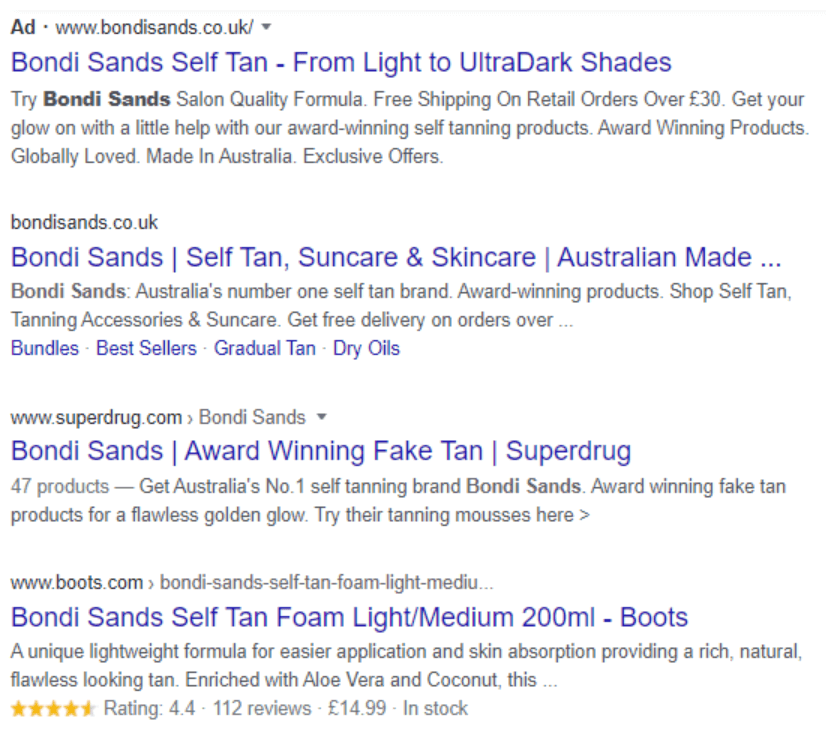
Bondi Sands distributors are ranking in positions 3 & 4 for the term ‘bondi sands’.
Competitor ad placements
It isn’t uncommon to find competitors bidding on PPC real estate within a brand’s search results. In the example below, the Hotjar branded SERP is serving a competitor’s paid ad. Every click on the Mouseflow ad is a potential lost customer to Hotjar. If you find that your competitors are competing on your brand name or branded products and that you are losing traffic from this then you will need to adapt your PPC approach to protect your brand traffic.
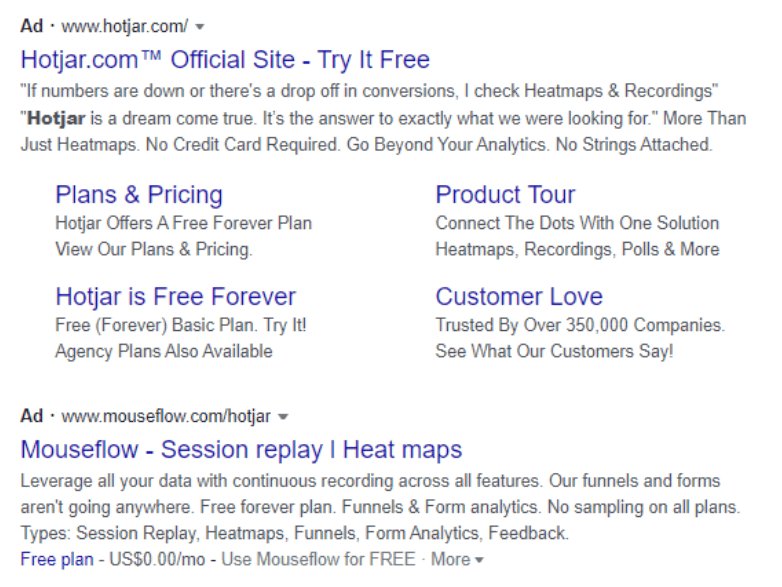
How to protect your brand SERP
We know that users searching for your brand can be one of the easiest groups to convert into customers, and so maintaining and protecting your brand SERP should be an ongoing activity.
Here are a number of actions that you can undertake to preserve your brand authority and showcase the right messaging to your customers:
Review your brand SERP and branded search terms
- Monitor your brand SERP on a regular basis. Look for any of the issue areas outlined above.
- Review the branded search terms within your Google Search Console account to identify what your customers are searching and look for any negative brand searches.
- Monitor your brand sitelinks. These are the links that Google will display under your main URL. Look for any sitelinks to old/outdated pages or low priority pages eg. basket or checkout pages. Although you can’t tell Google which sitelinks to use, you can influence this with your internal linking. Ensure that all pages across your website have clear titles and accurate anchor text.
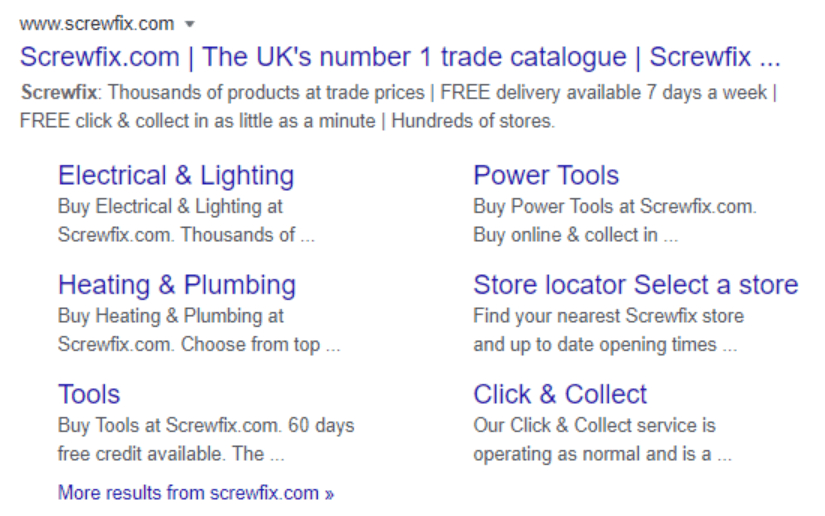
Screwfix sitelinks direct users to key pages throughout the website.
Optimise your Google My Business profile
Your Google My Business profile takes centre stage in your branded SERP and should be optimised & appealing. We have outlined areas in which you can optimise your profile below:
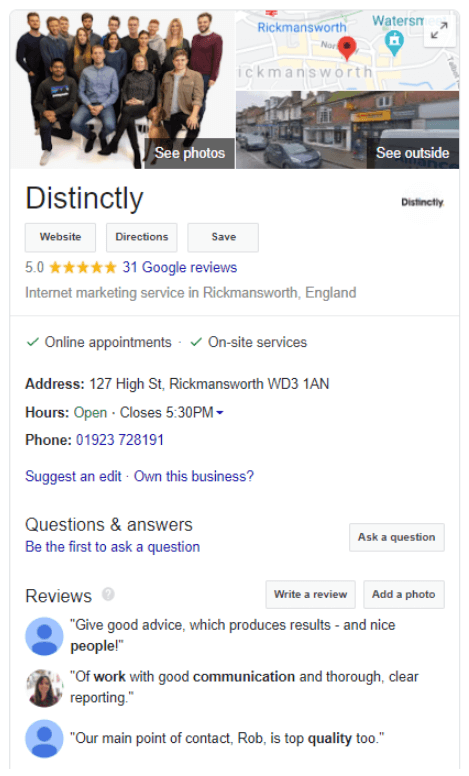
- Make sure that your contact information & opening hours are accurate. Google has introduced new options such as ‘temporarily closed’ for businesses affected by COVID lockdown measures.
- Select the right categories that describe your business and your offering. You can select a primary category and secondary categories.
- Optimise your profile name where possible.
- Use appealing & relevant imagery. Use this space to showcase your products or team members.
- Reply to reviews & Q&As; this shows your users that they can easily communicate with you if they need to.
- Publish posts on your profile with updates & information on your company and industry.
Focus on building positive reviews
- If you have a Google My Business profile then request reviews from your customer base.
- If you have product pages on your website you should allow users to leave reviews. These reviews can be displayed in your brand SERP using structured markup.
- If you use a third-party review platform like TrustPilot or Feefo then focus on also building positive reviews here. These websites are highly authoritative and will often appear in your brand SERP.


